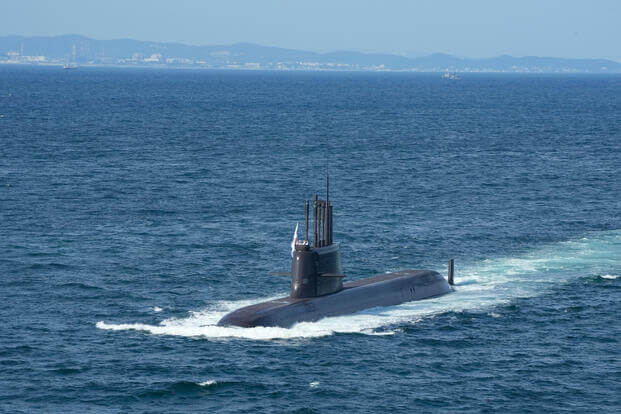South Korea is joining a small circle of nations that operate nuclear-powered submarines.
On Oct. 29 during his days-long trip to Asia, U.S. President Donald Trump announced following his meeting with various heads of state that nuclear submarines will be built at the Philadelphia shipyards in the United States. The deal came after the president announced that an economic agreement was being finalized for South Korea to invest $350 billion in the U.S. as tariffs continue to impact domestic and foreign policy.
“Our (U.S and South Korea’s) military alliance is stronger than ever before, and based on that, I have given them approval to build a Nuclear Powered Submarine,” Trump wrote on Truth Social.
The proverbial green light turns South Korea into a blue-water navy and places the nation among a small group with such capabilities. Only the United States, China, Russia, Britain, France, India and Australia have moved toward nuclear-powered submarines.
Bruce Bennett, a senior defense analyst at the RAND Corporation, told Military.com that the submarine brings South Korea closer to wartime operational control of allied forces. South Korean President Lee Jae Myung has pushed for that authority, with a nuclear submarine now giving the nation the ability to act without waiting for U.S. direction.
Military.com asked the State Department how the approval changes the balance of power. They referred the inquiry to the Pentagon, which at press time did not respond.
Domestic Responsibility
A nuclear submarine gives South Korea the reach to slip into deep Pacific waters, hunt Chinese and North Korean vessels, and guard sea lanes with U.S. forces. South Korea’s submarine is anticipated run on uranium fuel enriched inside the country.
The move signals a new kind of alliance. Washington wants Seoul to take more responsibility for its own defense and prepare for wartime control of allied forces. South Korean officials have pushed for that authority for years, but a nuclear-powered submarine brings that goal closer.

Military.com contacted U.S. Forces Korea and the U.S. Embassy in Seoul for comment.
The approval changes the U.S.-South Korea alliance. A nuclear submarine can stay underwater for long periods and track Chinese ships far from shore. Analysts say Washington wants South Korea to carry more of the security burden. Military.com asked U.S. Indo-Pacific Command and the U.S. Pacific Fleet whether the submarine would affect American posture in the region. Neither responded.
Defense Secretary Pete Hegseth visited South Korea while discussions were ongoing. His visit added political attention to the program and raised pressure on lawmakers in both countries.
Military.com asked the Defense Department whether the visit signaled new momentum. The Pentagon did not respond.

Crowded Waters
North Korea has previously attempted to build nuclear-armed submarines, but those vessels have limited range and operate with louder engines. A South Korean nuclear submarine could track North Korean and Chinese submarines in the Yellow Sea, the Sea of Japan, and a wider Pacific region that has become more crowded.
The U.S. Navy maintains aircraft carriers, destroyers and nuclear-powered submarines in the area. Japan continues to expand its submarine fleet. Australia plans to build nuclear-powered submarines through the AUKUS agreement. South Korea is preparing to join them.
South Korea has never operated a nuclear-powered submarine. The new program would change the balance on the Korean Peninsula and increase pressure on China. The region now waits to see how quickly Seoul will move from approval to construction.
Story Continues
Read the full article here





